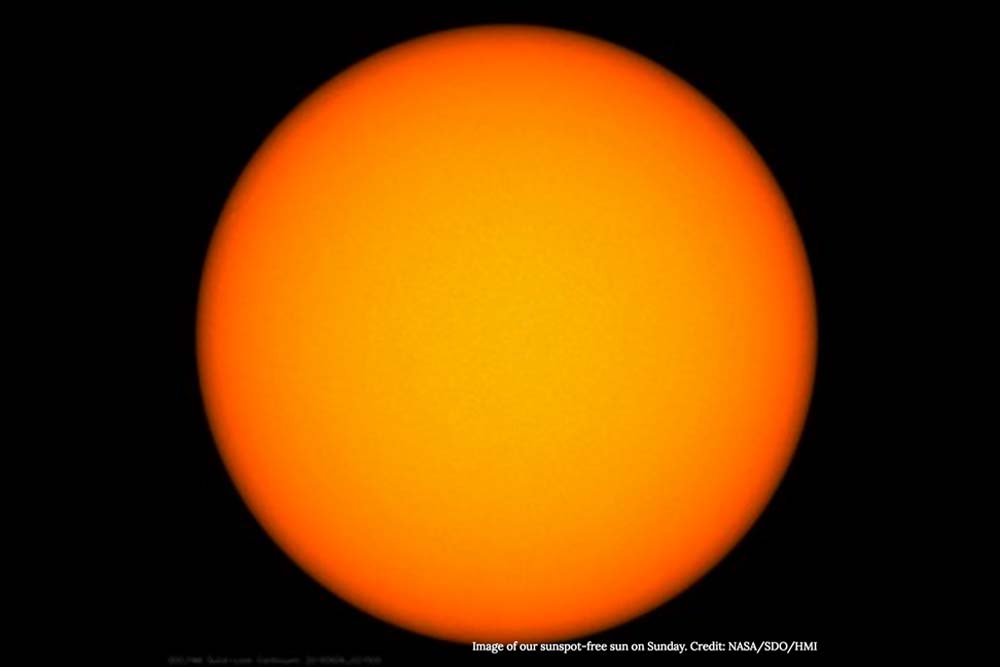Where Are The Sunspots?

For the first time in almost two years, the face of the sun is spot-free, a hint that the sun is heading toward a new phase in its 11-year cycle.
Sunspots are dark knots of geomagnetic turmoil that give rise to solar flares and particle-spewing coronal mass ejections.
PHOTOS: The Psychedelic Anatomy of a Solar Flare
At its peak in April 2014, the sun had an average of 116 sunspots. The blank sun, which first appeared on June 3 and continues today, is an indication solar minimum is on its way.
"The current solar cycle is not finished. It is, however, rapidly waning," Tony Phillips writes on the SpaceWeather.com website.
The next solar minimum is expected in 2019-2020, but it will be a gradual transition.
"Underneath the visible surface of the sun, the solar dynamo is still churning out knots of magnetism that will soon bob to the surface to make new sunspots," Phillips writes.
Get the Space.com Newsletter
Breaking space news, the latest updates on rocket launches, skywatching events and more!
"Between now and then, there will be lots of spotless suns. At first, the blank stretches will be measured in days; later in weeks and months," he said.
NEWS: Spotty Star Reveals Magnetic Weirdness
Living near a star doesn't get any easier during solar minimum. For one thing, the upper atmosphere of Earth will cool and condense, which lets space junk whizzing around the planet come closer.
Also when solar activity diminishes, astronauts in space face a greater risk of being zapped by galactic cosmic rays, which will no longer be kept at bay by a big heliosphere, the region of space under the sun's influence.
Originally published on Discovery News.
Join our Space Forums to keep talking space on the latest missions, night sky and more! And if you have a news tip, correction or comment, let us know at: community@space.com.

Irene Klotz is a founding member and long-time contributor to Space.com. She concurrently spent 25 years as a wire service reporter and freelance writer, specializing in space exploration, planetary science, astronomy and the search for life beyond Earth. A graduate of Northwestern University, Irene currently serves as Space Editor for Aviation Week & Space Technology.








